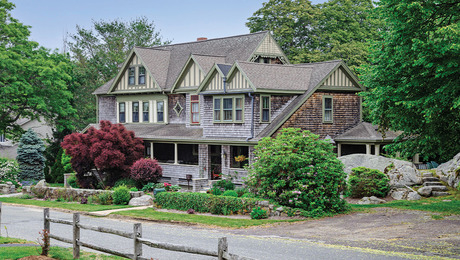Client has asked about getting a smooth finish on existing walls, which have an orange-peel texture and have been painted. House is 20 yrs old, goiod condition, don’t know how many coats of paint, but it is satin or semi-gloss paint so it may not be the original. Can I lightly sand then skim coat all-purpose compound, or is there more required?
Do it right, or do it twice.















Replies
Did something similar two weeks ago. Had to replace part of a stippled plaster wall with drywall. I sanded the whole wall with a medium grit on a RO sander, wiped it all down to eliminate the dust, then skim coated the wall. Afterwards, I sanded, primed, and painted.
But bubbles formed and the paint peeled in places. Take a look at this link. Piffin recommended a bonding agent. (Not 007.)
http://forums.taunton.com/tp-breaktime/messages?msg=29726.1
Good Luck.
I missed that discussion. Sounds like I should do the steps you used, with the addition of a bonding agent after the dust-off.
Interesting comment from the guy who said it wasn't your problem. "Referral" and "repeat business" must not be part of his vocabulary.Do it right, or do it twice.
It just seems to me that these type of jobs are potential disasters. No matter what the customer says at the start by the time you go to collect the $ at the end they want a perfect job. You throw in the customers furniture that you have to work around, the kids, pets , cleanup & the job ain't worth the $ or the "repeat business"
I'd use topping compound for the skim coat. It goes on easier and sands way easier.
and sands way easier. Well! You're assuming that I have to sand my mud jobs! Some of us get the mud applied perfectly when it's wet!
Would you still lightly sand the walls before applying the topping compound?Do it right, or do it twice.
I'd sand first to knock down the high spots and get a bit more grip for the compound. I always lightly sand the top coat too. It will be a lot smoother, and I think the primer sticks better.
Is the orange peel in the wall finish or the paint? Is it from using too heavy a nap on the roller or not cleaning nozzels properly. Get enough money up front to cover materials at least and time if you can then leave profit for final payment. Sand well then CLEAN WELL then mix all purpose JC with enough water in wheelbarrow so you can roll onto wall with 1/2" nap roller, then trowel smooth when dry sand smooth, ayuh you don't have too LOL, prime by sprayer or 1/4" roller, then finish in same manner with eggshell or better. This will give you as smooth a finish as possible with spraying being your best bet.
Folks in Texas seem to like textured walls, and this house is done in the typical manner: after the rock is taped and sanded smooth enough for applying the finish, and before paint is applied, a thinned joint compound mixture is sprayed on the walls with a texture sprayer. Depending on the thinness of the mixture, the gun settings, and the skill of the operator, the resulting texture looks remarkably like the skin of an orange. Or not, depending on the operator. After it dries (overnight) the walls are painted normally.
When you say the first step is to sand well, do you mean to sand off the paint, or just take off the gloss, or what?
Do it right, or do it twice.
Sand enough to degloss, the big thing is to clean all the dust off before refinishing the JC sould adhere to the wall then without bubbles or craters.I have never refinished a wall with that type of texture but I have used this method on walls that have had heavy vinyl fabric backed wallpaper pulled off and I sanded and skimmed with this method and it worked like a champ, this was after paying a crew to skim some walls on another job and while watching them I said I can do that.
PS. the bonding agent is for use when applying JC over plaster.
One of the main functions of the sanding is to take down the high spots. The texture is bound to be uneven, and as you drag your knife across it, high spots will leave ridges. Sanding first minimizes that problem.
I had some horrid texture on some walls that had to be redone, very very heavy, and I scraped most of it off with a 5" scraper, then sanded, skimmed and re-textured. Did a knock down, looked great. But I've skimmed walls back to flat prior to wallpapering, too, and an inital once-over with some 80 grit on a pole sander does a world of good prior to the skim coat.